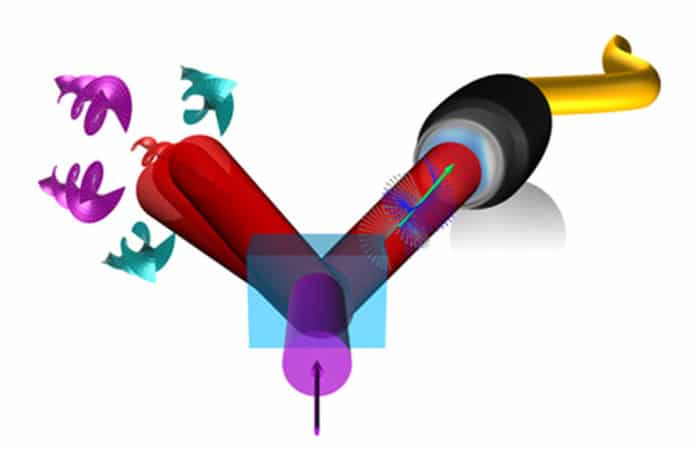By demonstrating multiple quantum patterns of twisted light to transmit across a conventional fiber link, scientists have found exciting implications for secure data transfer across optical fiber networks. The study offers another new approach of realizing a future quantum network, harnessing multiple dimensions of entangled quantum light.
Scientists demonstrated a new paradigm for realizing a future quantum network. The team indicated that multiple patterns of light are available after a communication link of conventional optical fiber that incomprehensibly can help a single pattern. The group accomplished this quantum trick by designing entanglement in two degrees of freedom of light, polarization, and pattern, passing the polarized photon down the fiber and getting to the numerous patterns with the other photon.
Professor Andrew Forbes from the School of Physics at Wits University said, “In essence, the research introduces the concept of communicating across legacy fiber networks with multi-dimensional entangled states, bringing together the benefits of existing quantum communication with polarized photons with that of high-dimension communication using patterns of light.”
The spatial pattern of light, its pattern, is another degree of freedom that has the benefit of high-dimensional encoding. There are many patterns to use, but unfortunately, this requires custom fiber optic cable and is therefore unsuitable for existing networks.
In this study, scientists discovered a way to balance these two extremes by combining polarization qubits with high-dimensional spatial modes to create multi-dimensional hybrid quantum states.
Forbes said, “The trick was to twist the one photon in polarization and twist the other in the pattern, forming ‘spirally light’ that is entangled in two degrees of freedom. Since the polarization-entangled photon has only one pattern, it could be sent down the long-distance single-mode fiber (SMF). In contrast, the twisted light photon could be measured without the fiber, accessing multi-dimensional twisted patterns in the free space. These twists carry orbital angular momentum (OAM), a promising candidate for encoding information.”
“The novelty in the published work is the demonstration of multi-dimensional entanglement transport in conventional single-mode fiber. The light is twisted in two degrees of freedom: the polarization is twisted to form spirally light, and so is the pattern. This is referred to as spin-orbit coupling, here exploited for quantum communication. Each transmission is still only a qubit (2-D), but there is an infinite number of them because of the infinite number of twisted patterns we could entangle in the other photon.”
The team demonstrated the transfer of multi-dimensional entanglement states over 250 m of single-mode fiber, showing that an infinite number of two-dimensional subspaces could be realized. Each subspace could be used for sending information, or multiplexing information to multiple receivers.
Forbes said, “A consequence of this new approach is that the entire high-dimensional OAM Hilbert space can be accessed, but two dimensions at a time. In some sense, it is a compromise between simple 2-D approaches and true high-dimensional approaches. Importantly, high-dimensional states are unsuitable for transmission over conventional fiber networks, whereas this new approach allows legacy networks to be used.”
The study is published in the journal of Science Advances.
